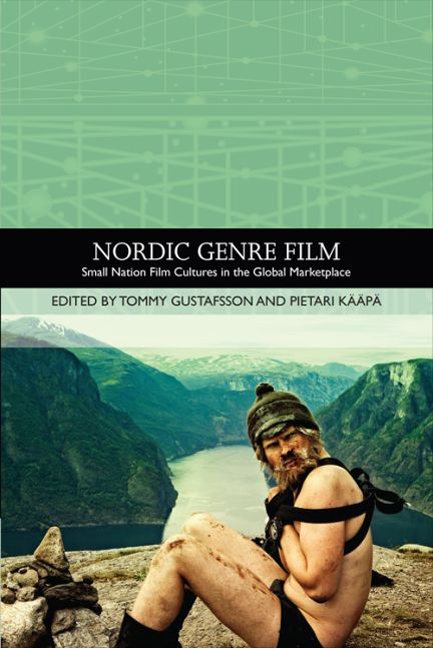Book contents
- Frontmatter
- Contents
- List of Illustrations
- List of Contributors
- Traditions in World Cinema
- Introduction: Nordic Genre Film and Institutional History
- PART I HERITAGE CINEMA AND NATIONAL NARRATIVES
- PART II CRIME AND DETECTIVE NARRATIVES
- PART III NORDIC OPTIMISM: ROAD MOVIES, COMEDIES AND MUSICALS
- PART IV NORDIC HORRORS
- PART V GENRE BENDERS
- 15 A National/Transnational Genre: Pornography in Transition
- 16 Going Hollywood: Nordic Directors in American Cinema
- 17 A Culture of Reciprocity: The Politics of Cultural Exchange in Contemporary Nordic Genre Film
- Index
15 - A National/Transnational Genre: Pornography in Transition
from PART V - GENRE BENDERS
Published online by Cambridge University Press: 25 October 2017
- Frontmatter
- Contents
- List of Illustrations
- List of Contributors
- Traditions in World Cinema
- Introduction: Nordic Genre Film and Institutional History
- PART I HERITAGE CINEMA AND NATIONAL NARRATIVES
- PART II CRIME AND DETECTIVE NARRATIVES
- PART III NORDIC OPTIMISM: ROAD MOVIES, COMEDIES AND MUSICALS
- PART IV NORDIC HORRORS
- PART V GENRE BENDERS
- 15 A National/Transnational Genre: Pornography in Transition
- 16 Going Hollywood: Nordic Directors in American Cinema
- 17 A Culture of Reciprocity: The Politics of Cultural Exchange in Contemporary Nordic Genre Film
- Index
Summary
The most (in)famous Swedish pornographic film from the 1970s is perhaps Fäbodjäntan (Come and Blow the Horn, 1978). In the national imagination, it has become not only iconic of an era clouded by myth and legend of Swedish sin and a golden age of porn and erotic cult movies, but also of a half-jokingly celebrated Swedishness as well. Partly this has to do with the title and the setting, as Mats Bjorkin notes in his essay on the film ‘Fäbodjäntan: Sex, Communication, and Cultural Heritage’ (2005): the fäbod is a place away from farming villages where, historically, farmers brought their animals for summer pasturage. Women followed the herds to the fäbod to watch them. Although Come and Blow the Horn takes place in contemporary times, it still plays upon this national historical image, and it is shot in the county of Dalecarlia (Dalarna) which is particularly associated with the fäbod practice. Although perhaps not the ideal of Sweden, through its director's use of national iconography – summer, the fäbod, an alleged Viking artifact (the horn itself), skinny-dipping – and more or less unintentional comedy, the film has through the years become a part of the ‘imagined community’ (Anderson 1983) of Sweden.
However, and as Bjorkin also points out in his essay, Come and Blow the Horn is directed by an American, namely sexploitation and porn director Joe Sarno (Bjorkin 2005), under one of his many pseudonyms, Lawrence Henning. It is produced by Joe Sarno Productions – probably created only to produce Come and Blow the Horn and one other Sarno film, Kärleksön (‘Love Island’, 1977), with the same female star, Leena Hiltunen – and GeBe Film AB, a Swedish distribution company that sometimes also ventured into production (Larsson 2010). Paradoxically, although Come and Blow the Horn exists in the national imagination as an iconic example of ‘Swedish sin’, it has not made a corresponding impression abroad. In that manner, it differs from other, similar enterprises, like Sarno's sexploitation Inga from ten years earlier (Jag – en oskuld, 1968), also shot in Sweden with Swedish actresses and actors, and claimed to be one of the films that propelled the notion of Sweden as a particularly sinful or sexually liberated country.
- Type
- Chapter
- Information
- Nordic Genre FilmSmall Nation Film Cultures in the Global Marketplace, pp. 217 - 229Publisher: Edinburgh University PressPrint publication year: 2015



